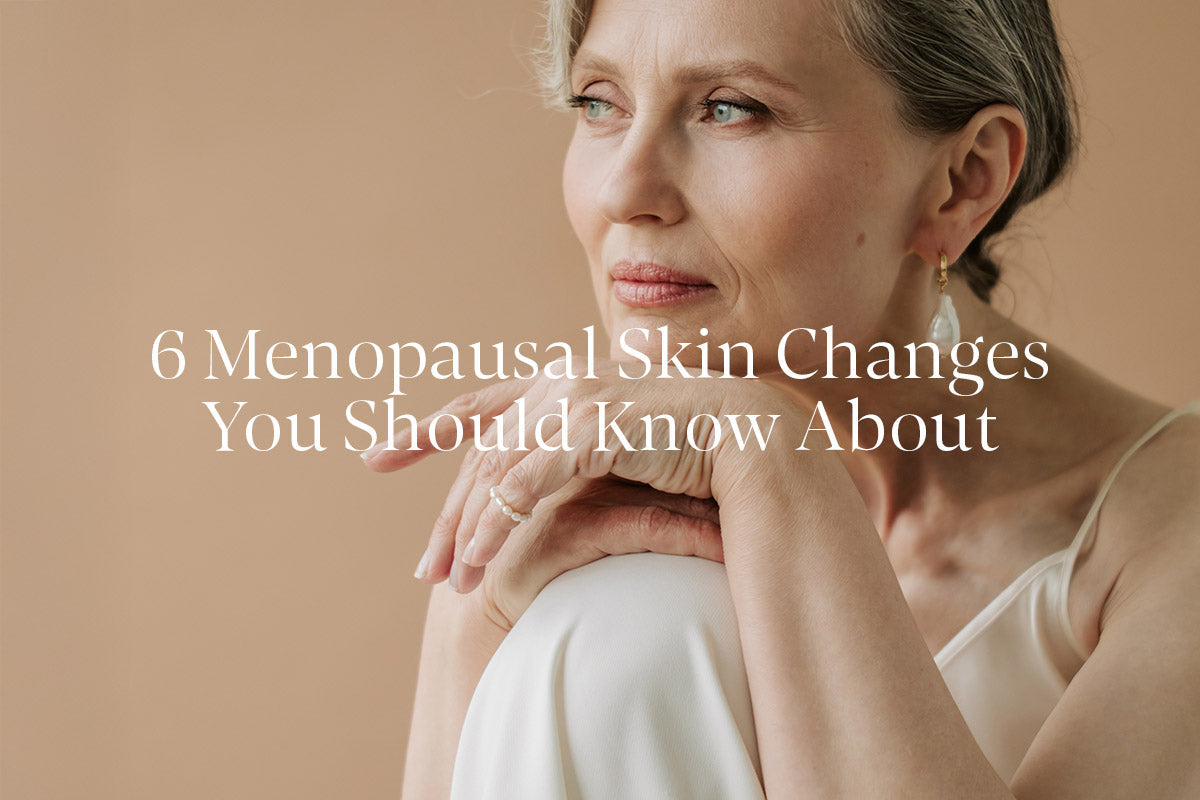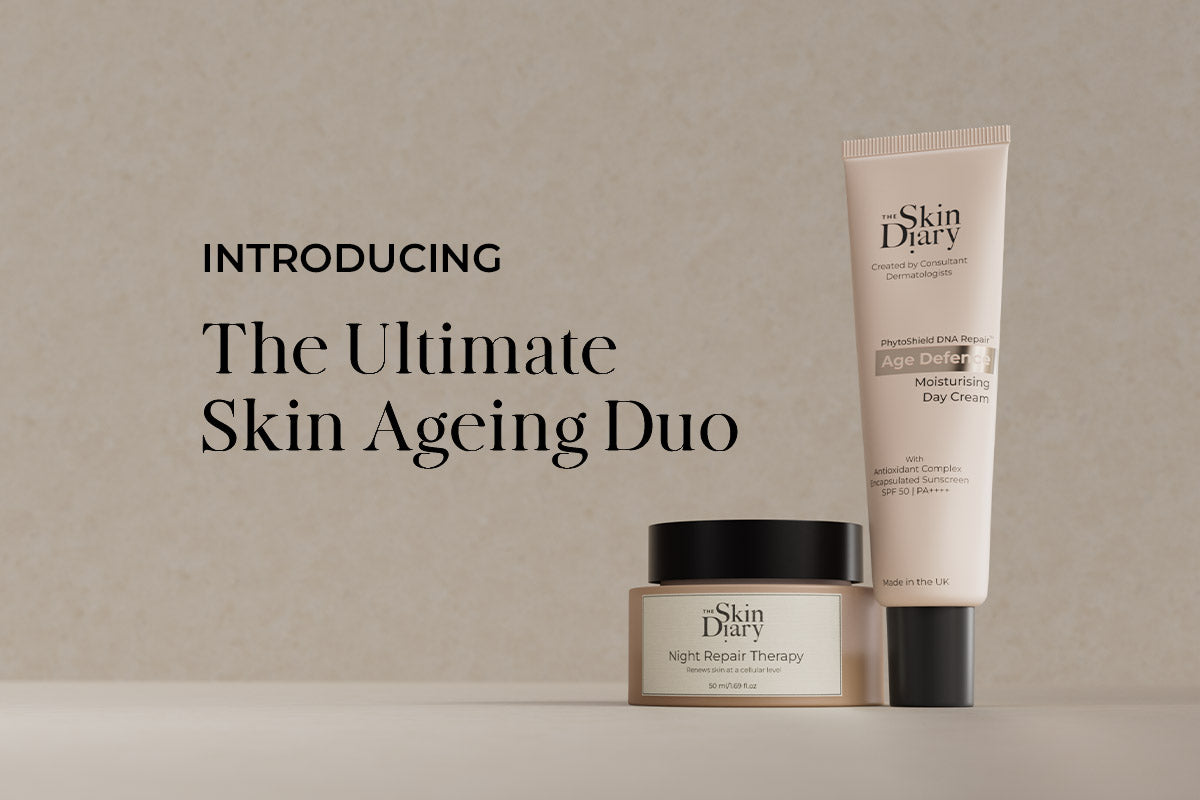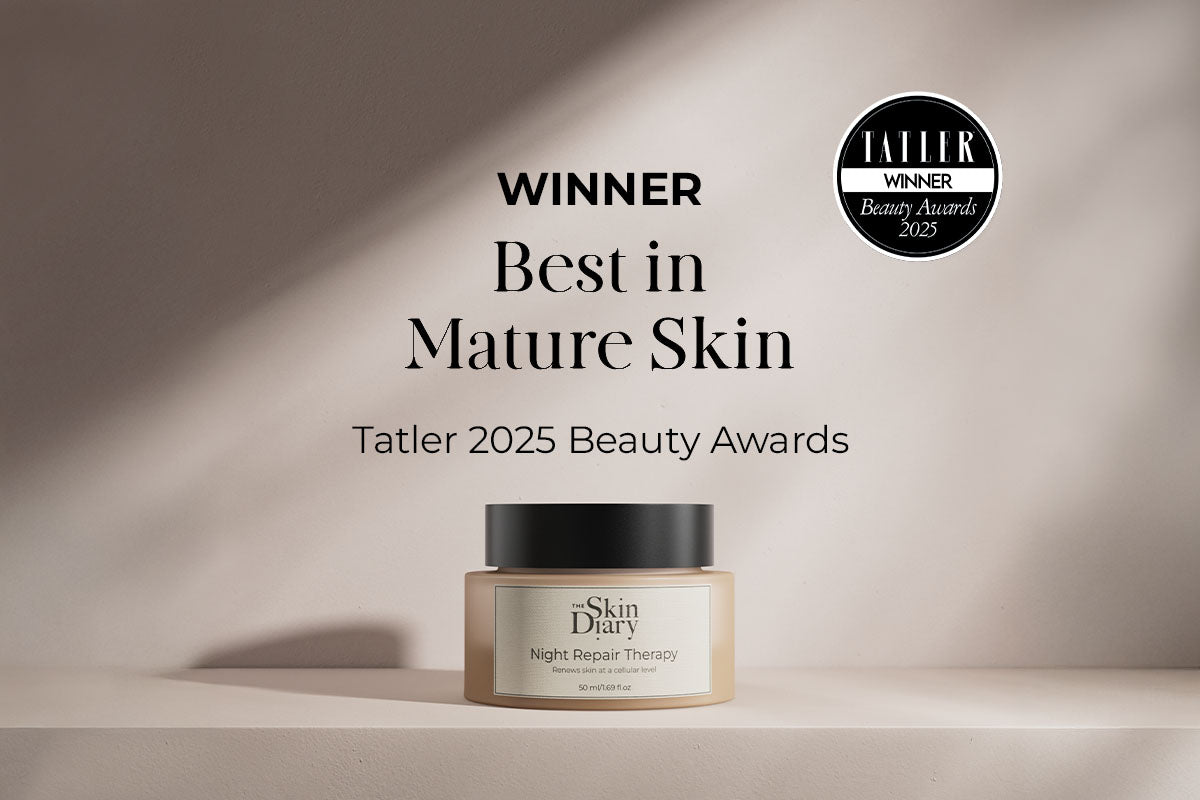Caring for your skin during perimenopause and menopause can mean switching up a few things in your routine to cater to the changes. During perimenopause, we experience hormone fluctuations and changes and once menopause hits, hormones can plummet, particularly oestrogen levels. This brings with it some significant changes to your skin.
To better adapt your routine, it’s helpful to know exactly what’s going on with your hormones and subsequently your skin during this time. We’ve compiled the 5 things you should know about menopause and the skin — and what to do about it.
1. Decreased Collagen Production
Because oestrogen plays a crucial role in maintaining our collagen levels, and this oestrogen drops during menopause, it makes sense that our collagen levels also drop. Collagen is a protein providing structural support and elasticity to the skin, which is what gives us a youthful appearance. As oestrogen levels decline during menopause, collagen production decreases, which can lead to a loss of skin firmness and elasticity. The loss of this skin structure can lead to premature ageing, loss of firmness and crepey skin.
2. Dryness and Thinning
Due to the decline in oestrogen levels, postmenopausal skin can cause the skin’s sebaceous glands to produce less oil, which leads to decreased hydration. This results in dry, itchy skin and can even lead to skin thinning, which makes it more prone to a damaged skin barrier. In an ageing population, this skin thinning can have a significant impact on people in later life, making it more susceptible to damage.
3. Increased Sensitivity
Because of this dryness, loss of collagen and thinner skin, some women may experience increased skin sensitivity and irritation during menopause. This can be attributed to hormonal fluctuations and changes in skin barrier function. This might mean you choose to switch out your skincare as a result. Ingredients like retinoids might irritate your skin more than they used to.
4. Slower Wound Healing
Another impact of this decrease in oestrogen levels during menopause is slower wound healing. Oestrogen plays a role in the regulation of wound healing processes, meaning when those levels drop, so does our body’s ability to heal. This can be a major problem in later life as it makes the skin more susceptible to injury and infection.
5. Hyperpigmentation changes
Unfortunately, skin tone changes, including hyperpigmentation, can occur during menopause. You may notice some areas of your skin are darker than others and that sunspots are more visible. This is believed to be down to fluctuation of oestrogen and progesterone levels, and potentially increased sun sensitivity. In addition to this, as we get older, our skin starts to show the accumulation of sun damage from our earlier years, particularly in those with a history of sun exposure.
6. You may experience acne
Both people who have had acne their whole life and those who have never experienced it before can have blemishes show up during this transition. Often acne in perimenopause and postmenopausal skin goes beyond just hormones. No matter your age, acne is multifactorial, involving skin cells not shedding, stress and lifestyle factor changes, microbiome impacts and much more. This is why acne requires a multi-faceted approach, including skincare (designed by an expert). Adult acne can be surprising and upsetting, but rest assured, there are treatment plans and experts here to help you.
So, what can we do about premenopausal and postmenopausal skin to help?
Caring for postmenopausal skin might take a little trial and error but it’s all about finding what works for the new you.
Carefully selecting actives
Now is the time to get serious about actives that aid our skin’s repair, but many of them can be irritating and confusing to use (needing to take into account skin adjustment and peeling). Night Repair Therapy is designed to care for your skin barrier while delivering results that are 20x more effective than retinol. Skin ageing during menopause is all about supplementing what has decreased, ensuring your nightly routine includes retinoids, helps to strengthen those elastic fibre structures that gives the skin its supple bounce. This collagen and elastic fibre increase helps decrease those fine lines and wrinkles and hyperpigmentation that can come with postmenopausal skin. Our nighttime formula also contains antioxidants because, yes, antioxidants at night serve their purpose.
Not over complicating it
We don’t believe that skincare should be overly complicated at The Skin Diary. Your skin can only tolerate (and absorb) a certain level of products so not excessively layering your products, and instead choosing wisely and sticking to those few products give you healthier, happier skin in the long run.
Not forgetting moisture
If you aren’t already, upping the hydrating products in your routine helps combat that dryness. Choose a night cream, like Night Repair Therapy, that’s designed to mimic the skin’s natural oils to repair and strengthen your skin barrier.
Don’t forget that sun protection
One of the best, and most cost-effective, ways of combating hyperpigmentation and sun spots is wearing daily sunscreen with SPF 50 with broad-spectrum protection. This prevents new DNA damage caused by UV rays from occurring, protecting the skin against cancer and skin concerns such as hyperpigmentation. Though, remember, sunscreen is just one step in sun safety, making sure you seek shade and cover up are also important.





